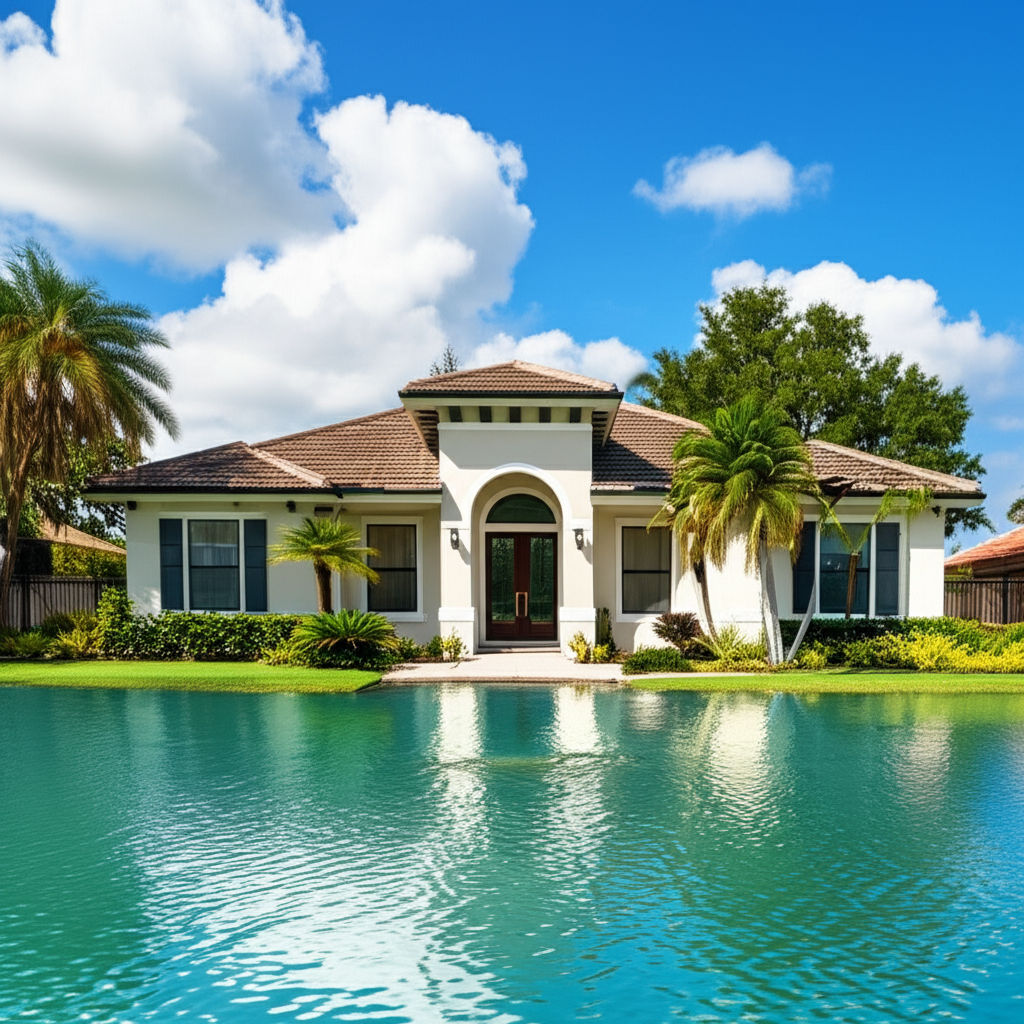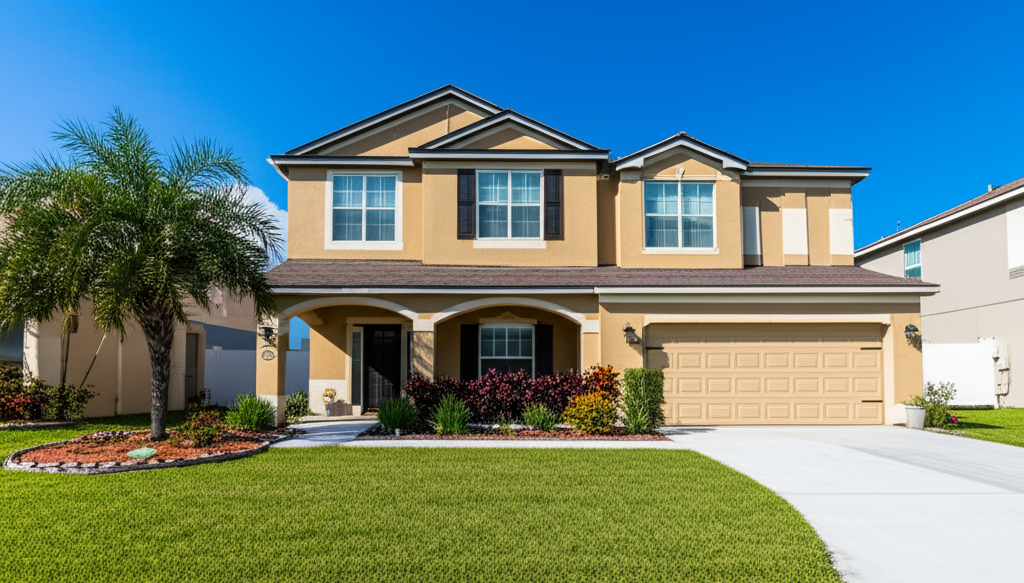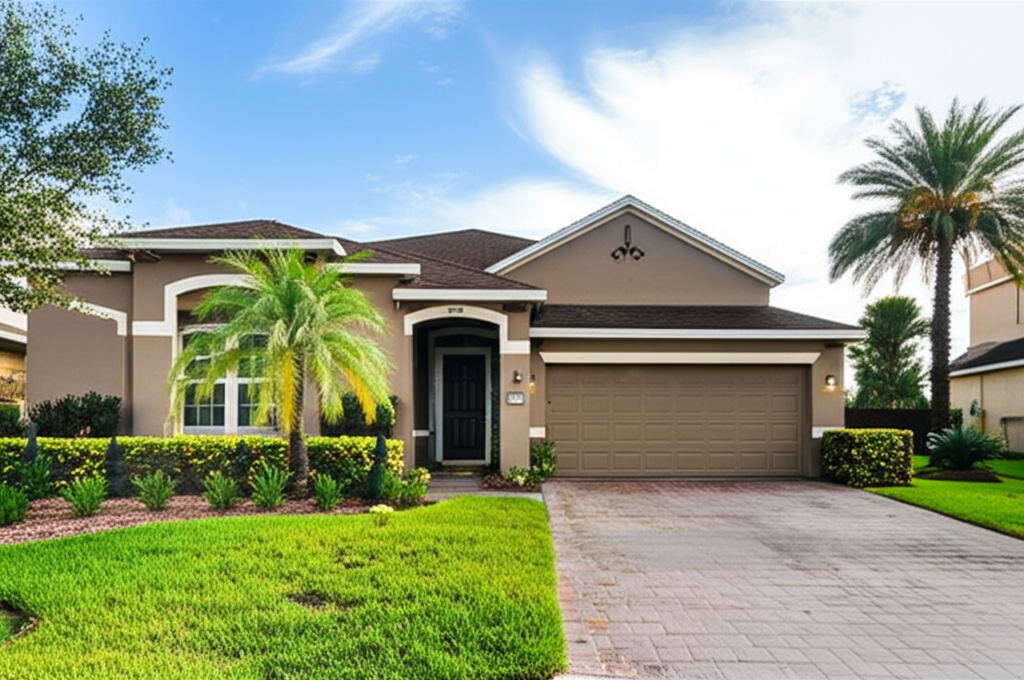Flood Insurance in Florida: What Homebuyers Need to Know Before You Close
Buying a home in Florida means buying near water in one form or another. That’s part of the appeal—canals, bays, lakes, and ocean breezes—but it also means understanding flood risk and how flood insurance fits into your budget and your closing timeline. Whether you’re eyeing a bungalow in St. Petersburg or a condo in Miami, getting smart about flood insurance early will save you time, money, and stress.
This guide walks you through how flood insurance works in Florida, how it affects mortgages, what to look for during inspections, and how to use insurance information to make better offers and negotiate with confidence.
Why Flood Insurance Matters Here More Than Almost Anywhere
Florida’s flood risk comes from more than hurricanes. Heavy afternoon downpours, king tides, overwhelmed drainage systems, and slow-moving tropical storms can all push water where it’s not meant to go. Homeowners insurance does not cover flooding from rising water; that coverage is separate. If you only carry a standard home policy and water enters your house from outside—storm surge, a creek spilling over, or streets that turn into rivers—you’re not covered unless you have a flood policy.
It’s also important to know that a surprising number of flood claims are filed by homes outside FEMA’s high-risk areas. Elevation, distance to water, and how your home is built matter as much as the line on a map. Treat flood insurance like a financial safety net, not a box to check only when a lender forces you to.
Mortgage Requirements: When Lenders Say “You Must”
If the home you’re buying is in a Special Flood Hazard Area—zones that usually start with A or V on FEMA maps—federally regulated lenders must require flood insurance for the life of the loan. Most private lenders follow the same rule. The required coverage amount typically must meet at least the lesser of your loan balance, the maximum available under the National Flood Insurance Program (NFIP), or the insurable value of the structure; your lender will spell out what they need in writing.
Two practical points matter for your closing. First, your lender will want to see proof of flood insurance before funding the loan, often called an insurance binder or declarations page. Second, many lenders set up an escrow account for flood insurance, meaning a portion of your monthly payment is set aside to pay the annual premium when it comes due, just like property taxes. Ask your loan officer early whether they escrow flood; it affects your monthly payment spread over 12 months rather than a single large bill.
Flood Zones, Maps, and Why Your Neighbor’s Premium Might Not Match Yours
FEMA flood maps categorize risk areas. Homes in A and V zones fall in high-risk areas where insurance is typically mandatory with a mortgage. X zone generally indicates a lower risk, though not zero. In coastal Florida, V zones incorporate wave action; inland, A zones often reflect riverine or rainfall-driven flooding. Maps are useful, but they’re not the whole story.
In the last few years, the NFIP changed how it prices risk through a system often referred to as Risk Rating 2.0. Instead of relying heavily on zone letters and older data, rates now factor in things like your home’s elevation relative to expected flood levels, distance to various water sources, foundation type, and replacement cost. That’s why two houses across the street from each other can have very different premiums. For example, a Key Largo cottage with its first living floor elevated three feet above anticipated flood levels might see a moderate premium, while a ground-level home on the same block could be much higher, even if both appear in the same zone.
Elevation Certificates, Surveys, and What to Order During Inspections
An Elevation Certificate is a document prepared by a licensed surveyor that shows critical elevations for your property and structure, like the height of the lowest floor, the height of mechanical systems, and the base flood elevation (BFE) established by FEMA. While Risk Rating 2.0 doesn’t always require an Elevation Certificate, having one can refine your quote and often reduce your premium if your home sits higher than a basic estimate suggests.
Timing matters. Many buyers bundle the Elevation Certificate with the boundary survey to save a trip and a fee. If the house is older and ground-level in a high-risk zone, order the Elevation Certificate early in the inspection period. You’ll want to know if premiums will fit your budget before you waive contingencies. If the certificate shows your first finished floor is above BFE, your insurer may be able to rate the home more favorably than a preliminary estimate.
For some properties that were mapped into a high-risk zone even though the building pad is actually higher than BFE, a letter from FEMA called a Letter of Map Amendment (LOMA) can sometimes remove the structure from the high-risk designation. That process takes time and documentation; it’s not a closing-week fix. Still, if a seller already has a LOMA in hand, it’s a win for your insurance costs and peace of mind.
NFIP vs. Private Flood Insurance: Choosing the Right Path
Florida has both the federal NFIP and a growing private flood market. Many buyers get competitive quotes from both because each has pros and cons.
The NFIP is widely accepted by lenders and offers up to $250,000 in building coverage for a one- to four-family dwelling, plus up to $100,000 for contents. It’s stable, backed by the federal government, and offers community-based discounts when your city or county participates in FEMA’s Community Rating System. The tradeoff is the coverage limit and some coverage restrictions, especially for items in basements or enclosures below the elevated living area.
Private flood insurers may offer higher building limits, optional add-ons like temporary living expense coverage, and sometimes lower premiums for certain homes. Policies can be more customizable, and waiting periods are often shorter. On the other hand, private carriers can non-renew or change pricing based on evolving models, and not every lender will accept every private policy; the policy must meet federal standards. If the home is in a Coastal Barrier Resources System area—environmentally sensitive coastal zones where federal flood insurance generally isn’t available—private flood may be your only choice.
A good insurance agent will quote both, explain key differences in coverage, and confirm lender acceptability before you commit.
What Flood Policies Actually Cover (and What They Don’t)
Think of flood insurance as two parts: building and contents. Building coverage addresses the structure and things permanently attached—walls, floors, built-in cabinets, major systems. Contents coverage addresses your belongings, from furniture to electronics. With the NFIP, contents coverage is separate and optional; many buyers mistakenly skip it and only realize after a loss that their personal items weren’t insured.
There are also location-specific rules. In areas below the elevated living space—like ground-level enclosures under an elevated coastal house—NFIP coverage can be limited. Mechanical equipment may be covered, but finished flooring, drywall, and personal property in those areas may not be. The NFIP does not include additional living expense coverage (the cost to rent elsewhere while your home is repaired), while some private policies do. Deductibles significantly impact your premium; choosing a higher deductible can reduce cost, but make sure you can afford that out-of-pocket amount in an emergency.
Timing Your Purchase: Quotes, Binders, and Avoiding Closing Delays
Get flood quotes as soon as your offer is accepted, ideally during your inspection period. Your agent will likely ask for the property address, year built, construction type, photos, the survey if available, and the Elevation Certificate if one exists. If there’s no certificate, your agent can still price the policy using other data; you can update the policy if you obtain a certificate later.
The NFIP typically has a 30-day waiting period for new policies, but there’s no waiting period when coverage is purchased in connection with making, increasing, extending, or renewing a loan. That means if your lender requires flood, it can become effective at closing. Some private insurers have little to no waiting period. To keep things smooth, aim to bind coverage a few days before closing and have the binder or declarations page sent directly to your lender and closing agent.
Sometimes you can assume the seller’s existing NFIP policy at closing. This can help maintain continuous coverage on the property and avoid a gap while you finalize your own arrangements. The premium may adjust to reflect current rating factors, so don’t assume the cost will be identical to the seller’s; confirm details with the insurer before you rely on it as part of your budget.
Smart Due Diligence During Inspections
Beyond the usual home inspection, ask specific, property-focused questions. Has the home ever had flood damage, and if so, what was repaired and when? Is flood insurance currently carried, and what are the limits and premiums? Can the seller provide any Elevation Certificate, prior flood quotes, or letters from FEMA? In Florida, sellers are expected to disclose known material facts that affect value, and most standard disclosure forms include flood-related questions. If the property has undergone substantial repair or renovation, ask to see permits and final inspections—especially after major storm years.
Walk the property with your inspector and look at the details insurers care about. Are electrical panels, water heaters, and HVAC units elevated above known flood levels? If the home is elevated with an enclosure below, are there proper flood openings or vents? Do downspouts carry water away from the structure? These small items can reduce both risk and premiums. Insurers will often want photos of the exterior and mechanical systems; if something looks borderline, flag it early so the seller has time to address it or you can factor it into negotiations.
Mitigation That Can Lower Your Premium
Insurers reward risk reduction. Elevating mechanicals, adding compliant flood vents to enclosures, and using flood-resistant materials in areas below the first living floor can all lower your premium. If you’re planning renovations, raising the first finished floor above base flood elevation (or adding “freeboard,” which is extra height above the minimum) can make a significant difference, as can converting ground-level living areas to non-living storage to reduce exposure. Communities that participate in FEMA’s Community Rating System can also deliver automatic percentage discounts on NFIP premiums; your agent can tell you whether your city qualifies.
Consider a simple scenario. Two similar homes in Cape Coral both list at the same price. The first has an Elevation Certificate showing the first living floor one foot above BFE and flood openings in the lower enclosure; its quoted NFIP premium lands in a moderate range. The second lacks vents and has mechanicals on the slab; the premium quote comes in much higher. If you love the second home, you can ask the seller for a credit to add vents and elevate the mechanicals, reducing your ongoing insurance cost and improving your risk profile from day one.
Condos, Townhomes, and HOAs: Don’t Assume You’re Covered
If you’re buying a condo, ask for a copy of the association’s master flood policy, often called an RCBAP (Residential Condominium Building Association Policy). It covers the building’s structure and common elements up to specific limits. Your lender will want to confirm the master policy’s adequacy. As a unit owner, you may still need a separate policy for what’s “inside the walls” and your personal property. Coverage boundaries vary by association documents, so it’s important to read what the HOA is responsible for and what falls to you.
Townhomes can be trickier. Some are structured like condos with a shared master policy; others are individually insured like single-family homes. Clarify early which applies, because it changes both your coverage needs and your closing requirements.
Budgeting: What Flood Insurance Might Cost and How to Plan for It
Premiums vary widely in Florida. A newer elevated home in a lower-risk area might see a few hundred dollars per year, while a ground-level coastal home could see several thousand. Deductibles, chosen coverage amounts, and mitigation features all shift the number. To translate it into monthly terms, a $1,800 annual premium would add roughly $150 per month to your escrowed mortgage payment. That’s a meaningful number when you’re calculating your debt-to-income ratio for loan approval. Get real quotes—not online averages—before your inspection period expires.
Also understand how flood insurance interacts with your homeowners insurance. Some Florida home insurers, including the state’s insurer of last resort, require you to carry flood insurance as a condition of your homeowner’s policy even if you’re not in a high-risk zone. If the home you’re buying is currently insured that way, plan for that ongoing cost or shop alternatives.
Negotiation Tips: Using Insurance Information to Strengthen Your Offer
Flood insurance doesn’t have to be a deal-killer; it’s an information advantage. If you discover the premium is higher than expected because the home lacks flood vents or has low-lying mechanicals, you can request a seller credit to install vents or elevate equipment before closing. If a private flood policy delivers better coverage or pricing than the NFIP, document lender acceptability early so underwriting isn’t surprised at the eleventh hour. In rare cases where premiums dramatically exceed expectations, you can negotiate price or walk away within your contingency window with a well-supported rationale, not a hunch.
On the flip side, if the seller has a recent Elevation Certificate and favorable quotes, include that in your offer package to show you’ve done your homework. Sellers often respond well to buyers who demonstrate they’re prepared and likely to close without last-minute insurance issues.
Common Closing Pitfalls to Avoid
Three avoidable missteps show up often. First, waiting until the week of closing to shop flood insurance; if photos, surveys, or lender approvals are delayed, your funding can be too. Second, assuming the HOA’s master policy covers everything in a condo; it usually does not. Third, ignoring the flood risk because the home sits in an X zone; low risk is not no risk, and a preferred-rate policy in a lower-risk area is often inexpensive protection.
Putting It All Together
Buying in Florida means balancing sunshine with water wisdom. Treat flood insurance as part of the home’s total cost of ownership, not an afterthought. Verify your zone and elevation, get quotes from both NFIP and private insurers, and fold those numbers into your financing and negotiations. Use the inspection period to collect documents—Elevation Certificates, prior policy information, and any FEMA letters—and to plan practical mitigation that reduces both risk and premiums.
The goal isn’t to avoid water entirely; it’s to choose a home with eyes wide open, insure it properly, and make smart improvements over time. Do that, and you’ll be able to enjoy your Florida home with confidence—rain or shine.




